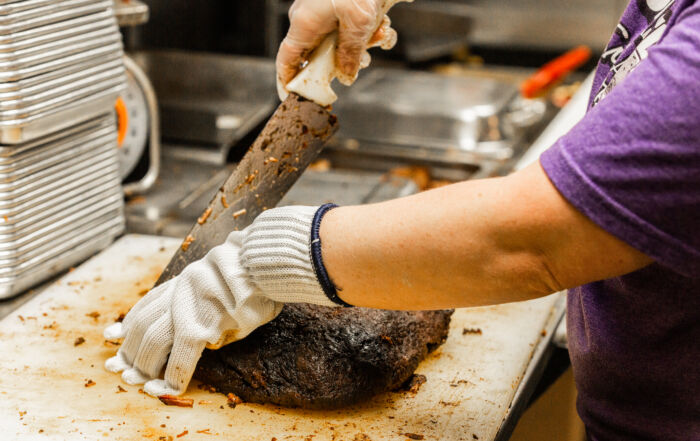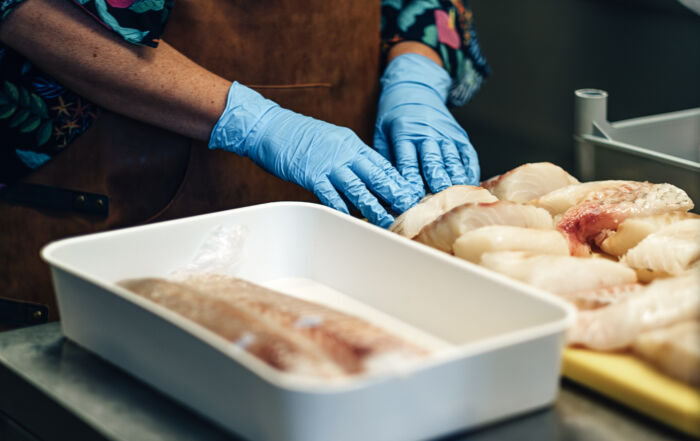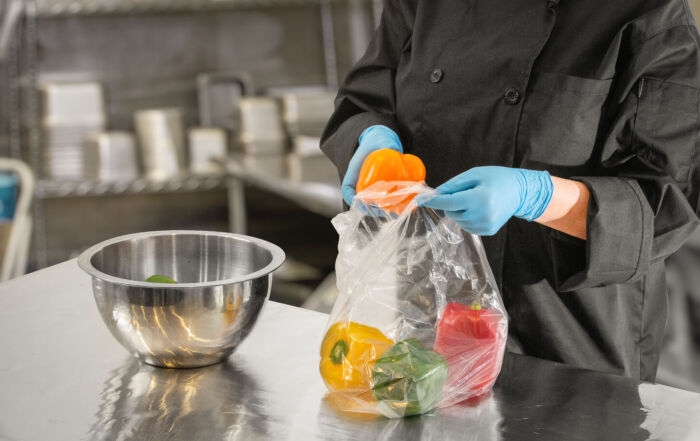Stocking Your Food Safety Toolbox
Blog by Lori Stephens, based directly on SafeBites webinar by Dr. Jeannie Sneed, PhD, February 2018
There are five main contributing factors that lead to foodborne illness. Based on the Centers for Disease Control and Prevention, or CDC, data related to actual foodborne illnesses, these five factors contribute most to outbreaks:
- food from unsafe sources
- inadequate cooking
- improper holding temperatures
- contaminated equipment
- poor personal hygiene
All of these factors are preventable, and some can be prevented by using the correct tools to monitor our food production and service processes.
Tools for your Food Safety Toolbox:
Control Factors
- Temperature Control: This is one of the most important food safety practices in any foodservice operation. Food can be a source of pathogens that can make people sick. Some of these pathogens may be in the food when it is delivered. That is why it is so important to monitor cooking temperatures. That is also why there are different cooking temperatures recommended for different products—poultry should be cooked to 165 degrees F., ground beef should be cooked to 155 degrees, and all leftovers should be cooked to 165.
- Controlling Time: This is highly related to temperature. Cooking temperatures also have a time factor—for example, cook poultry to 165 degrees F. for 15 seconds. Remember that time and temperature go together—and must be actively managed for food safety.
Probably the easiest way to talk about actively managing time and temperature for food is to relate it to the flow of food through the foodservice operating. At steps from receiving through serving, time and temperature must be managed and controlled.
We all know that the temperature danger zone is between 41 and 135, and that it is at these temperatures that bacteria grow most rapidly. So, we know that we always want to keep time and temperature control for safety, or TCS foods, out of the temperature danger zone.
Physical Tools
- Thermometers: To control temperature, the key is having the correct type of thermometer and using them correctly. We will begin exploring our toolbox by talking about thermometers—why they are important, the different types of thermometers, and their use.
- Bimetallic stemmed thermometer: Perhaps the thermometer that we see most often in foodservice operations. That is the one with the dimple about an inch or so above the tip. Bimetallic stemmed thermometers need to be calibrated frequently, and they are not tip sensitive. That means that the temperature sensing area goes from the tip of the probe to the dimple. These thermometers can be used to check temperatures of liquid or thick foods, but not thin items such as a steak or a hamburger.
- Thermocouple: This type of thermometer is tip sensitive and very versatile depending on the probe that you use. There are immersion probes to check liquid foods, surface probes to check flat cooking surfaces such as griddles; penetration probes that are very thin and may be used to check temperatures of thin foods such as hamburger patties, and air probes to check the temperature of refrigeration equipment and ovens. These thermometers are highly reliable and accurate.
- Infrared thermometer: This type of thermometer can be used to measure the surface temperature of food and equipment, but can not measure air temperature or the internal temperature of food. It has limited uses in a foodservice operation, although it can give us a quick and non-invasive measure of food temperatures at receiving.
- T-sticks: These are single-use measures that come in a variety of end-point temperatures—135, 145, 155, 160, and 165. There is a sensor at the tip that changes color when exposed to the indicated temperature. For example, if you insert a 155 degree T-stick in a hamburger patty and it turns dark, then you know the hamburger has cooked to 155 degrees.
- Adhesive single-use thermometers: With these thermometers, you “tape” these on a plate, put it in the middle of a rack of dishes and run it through the dish machine. If it turns totally black, then you know the rinse temperature is at least 160 degrees, which is the recommendation in the FDA Food Code.
- Hand Washing: Handwashing is an extremely important factor is preventing foodborne illness. The FDA Food Code calls handwashing out as a “Priority item”, meaning it contributes directly to the elimination, prevention, or reduction the hazards associated with foodborne illness. Handwashing is the single most important part of personal hygiene.
- Gloves: Using gloves to prevent cross-contamination – Gloves is a critical tool to minimize or eliminate cross contamination. It is so important that “no bare hand contact” rules were added to the FDA Food Code and most state and jurisdictional food codes
- Colored cutting boards: Using cutting board that are colored and only used for one type of product minimizes the chance for cross contamination. Example include red cutting boards are used for meat, yellow for poultry, and green for vegetables.
- Colored cutting boards can also be used to minimize Allergen cross-contamination prevention – the most common color is purple to denote that in an operation employees would NEVER use a purple cutting board for foods that contained any of the big 8 allergens.
- Sanitizer and Buckets: Sanitizing is another key to food safety.
- Documenting food safety data: Another great food safety tool is documenting food and air temperatures and sanitizing concentrations to ensure the right levels are being maintained. Remember the old adage—if it hasn’t been documented, it hasn’t been done!
READ MORE POSTS
Your Guide to Approved Food Safety Training Programs in 2025
Early in my foodservice career, I persuaded the owners of the restaurants I managed to [...]
Thanksgiving Food Safety: Separating Fact from Fiction
Most blogs that I write are geared toward the foodservice professional preparing food in commercial [...]
Preventing Norovirus in your Foodservice Operation
Norovirus is one of the leading causes of vomiting and diarrhea in the United States, [...]
Safe Handling of Leftovers in Foodservice Operations
In any foodservice operation, leftovers are inevitable. After managing a family-style restaurant, where all-you-can eat [...]










